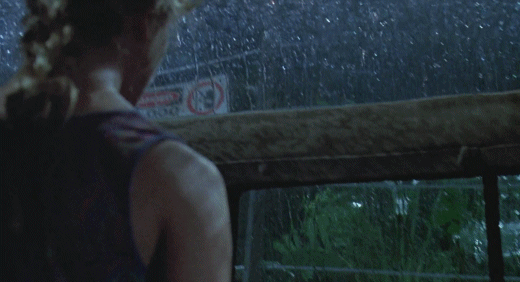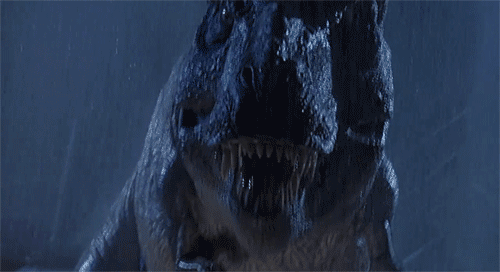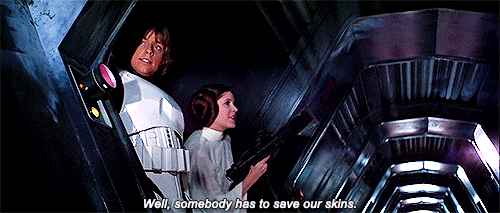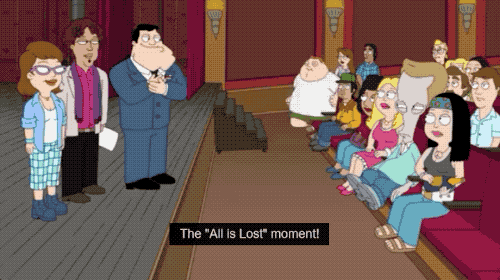ACT 2.2: THE PROMISE OF THE PREMISE

ACT 2.2: THE PROMISE OF THE PREMISE
The second half of Act Two is the under the umbrella of “The Promise of the Premise.” Second acts are tricky, and it is easy to get lost in the weeds of the story.
This phrase though completely changed the way I write. It is a simple key truth that defines what this segment of the movie is. In the first half of the story, we the writers present a premise to our audience. The second half of the story is where we pay off on the promise of that premise.
What kind of story did the audience come to see? Is it a superhero story? Well then this section of the movie had damn well better have some super heroics otherwise we welched on our promise to the audience. Did they come to see dinosaurs eat some dudes? Well we better have some spectacular dino carnage in this section to satiate our audience’s bloodlust. Did they come to see a heist movie? Well this is where the heist better damn well happen.
If this were a movie, this is the section that has all of the cherry parts for marketing companies to pull from to make a trailer. This is where the fun and games happen.
But before we dive into those fun and games of the second part of the second act, there is one more crucial storytelling signpost that we need to plant. And that is the Midpoint.
The Midpoint
The Midpoint is another point of no return. But unlike Crossing the Threshold, this isn’t a 90° turn for the protagonist. It is a natural cumulation of the previous 30 minutes of the second act. But there is definitely a new development that once again changes the world of the protagonist. It’s a 45° pivot rather than a 90° pivot.
In Save the Cat, Blake Snyder advocates presenting your protagonist with either a false peak or a false collapse. In both instances, the stakes are raised for the hero.
Nearly every romance film has a false peak right at the half-way point. I learned early on as a horny young preteen that if I wanted to quickly find the sex scene in a movie all I had to do was fast forward to the 60 minute mark. What I was unwittingly finding was the natural Midpoint for any love story. The characters consummate their relationship. The first half of the story is the set-up, getting to know the players, seeing their conflicts and their desires, and the Midpoint is where they take their relationship to a new level, the man takes her to bed instead of losing her forever, and they hence can never go back to being just acquaintances.
In Top Gun, its at nearly the 60 minute mark is where Kelly McGillis decides to take Tom Cruise’s breath away.

In Jurassic Park we get a false collapse with the scene stealing introduction of the Tyrannosaurus Rex, which roars into the movie at almost exactly the 60 minute mark. I love the Jurassic Park Midpoint, because the movie breaks with a shocking “Where’s the goat?” and a THUD.

And then ROARS into the Promise of the Premise.

Fun and Games
None of our hero’s plans can go smoothly. If we don’t raise the stakes, and throw some complications at them, the audience will lose interest, and our protagonist will effectively be weaker.
In Star Wars, we follow our protagonists through an ever shifting set of goals and complications. The first goal is to take Princess Leia the Death Star plans on Alderaan. Alderaan is blown up by the Death Star, and the Millenium Falcon is caught in a tractor beam, signaling the midpoint and false collapse respectively. But our intrepid heroes hatch a new plan; rescue the princess and escape from the Death Star.
Of course none of it goes to plan, and instead our heroes endure complication after complication, from being cornered in the cell block —

escaping the trash compactor —

running from and towards Stormtroopers —

insestual kisses and swinging across chasms —

and a light saber battle with Darth Vader.

This is the meat of the story. This is where all of the fun happens. The obstacles pile up, each one raising the stakes and increasing the intensity. And it all cumulates in the All Is Lost Moment.

All Is Lost
The All Is Lost Moment is where your hero has just about run out of options, and his goal no longer seems attainable. The function of this critical moment is to make the character hit rock bottom so that he or she is triggered into action to achieve his or her goal. At this point, your hero must be beat-up, battered, and emotionally devastated. This is the first time he’s been this distraught, this helpless, and is about to give up.
The All Is Lost moment is the inverse of the inciting incident. If the Inciting Incident sets the character off on an adventure, the All Is Lost of the soul seeks to end it. The more devastating the moment, the better. Our protagonist should be crushed, hopeless, and unable or unwilling to see beyond the darkness enveloping him or her.
As Blake Snyder states “When All is lost, your story succeeds.”
In Star Wars, Luke’s mentor, Obi-Wan Kenobi is struck down by Darth Vader.

In Back To The Future, Marty gets beat up by Biff and thrown into the trunk of a car, starts to sexually assault Lorraine, George McFly walks up and is put into a submission hold by Biff.

In Ghostbusters the All Is Lost Moment is when the EPA inspector Walter Peck forces the power grid to be shut down, releasing all of the spirits and thereby undoing all of the Ghostbuster’s hard work, leading to human sacrifice, dogs and cats, living together and mass hysteria.

From this moment of darkness, ACT 2 is officially over and we are thrust headlong into ACT 3:Climax and Denouncement.